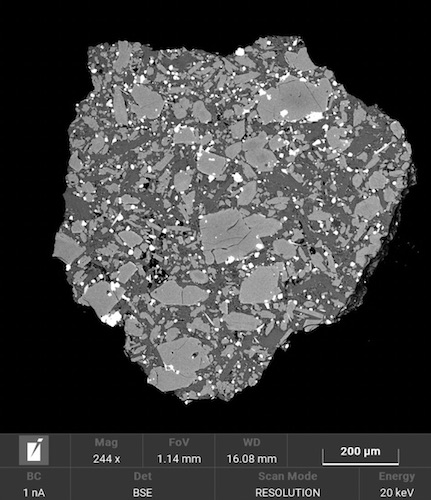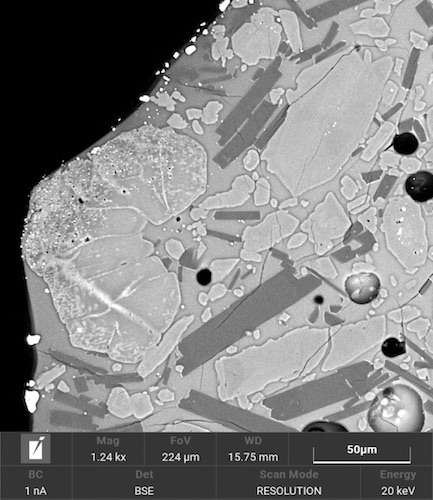Regolith weathering through heating samples under reducing conditions for Phobos surface studies
- 1IRAP-CNRS, CNES, Univ. Toulouse, France (jlasue@irap.omp.eu)
- 2IPAG, Univ. Grenoble Alpes, UGA/CNRS, France
Introduction:
Atmosphereless bodies of the Solar System present surface evolution under the harsh conditions of space weathering. Their regolith are exposed to thermal cycling, cosmic and solar rays irradiation, solar wind sputtering and micrometeorites bombardment and vaporization. With time these materials accumulate optically active opaque particles such as nanophase metallic iron particles on the surface or rims of dust grains or larger iron particles. The density increase in iron particles modifies the spectral properties of the material with a lowering of the particles albedo, and of the absorption bands amplitude generally associated with a global reddening of the spectral slope [1, 2].
Previous studies have shown that nanophase iron particles inducing weathering spectral properties will accumulate at the surface of olivine and pyroxene minerals under heating conditions simulating micrometeorite impacts [3]. The skin depth of weathered material depends on the weathering process and minerals.
Context for Phobos studies:
The moons of Mars, Phobos and Deimos, are some of the most enigmatic small bodies of the Solar System. Indeed, it is still debated in the community whether they originate from a large impact on Mars [4, 5], or if they are captured primitive asteroids [6]. The overall spectra of Phobos and Deimos are very red with no obvious diagnostic spectral features readily detected in the visible or near-infrared, similar to very primitive small bodies of the solar system. However, significant variations in the spectral slope indicates inhomogeneities of the material on the surface of Phobos. Comparison with analogues such as Tagish Lake meteorite and basalts suggests a probable mixture of asteroidal primitive material with basaltic materials such as the one originating from the nearby surface of Mars [7].
The Mars Moons Explorer (MMX) mission should attempt to bring back samples of the surface of Phobos to Earth in order to decipher the origin and dynamics of the Martian Moons system [8]. The MMX InfraRed Spectrometer (MIRS) instrument on-board the mission is an infrared imaging spectrometer in the range 0.9 to 3.6 μm that will extensively study the spectral properties of the surface of Phobos and provide context for the sample collection region.
Method:
In this context, we are preparing laboratory weathered analogues samples by submitting basalt (such as the Pic d’Ysson basalt already used for laboratory studies on the lunar regolith optical and spectrophotometric behavior [9]) and meteorite samples to near melting temperature (1000-1200°C) in an atmosphere controlled oven under reducing conditions (partial pressure of CO/CO2 of 96% corresponding to an oxygen fugacity of about 10-17) mimicking the space environment alteration effects for different exposure times (Fig. 1). We then explore the process of development and formation of submicroscopic metallic Fe, also referred to as nanophase iron particles (npFe0) [10] on the surfaces of the weathered samples.
Results:
A first comparison between unaltered Pic d’Ysson basalt grains and grains subjected to 4 hours heating at 1100°C under reducing conditions (fugacity of 10-17) is presented in Figure 2. The unaltered basalt grain present typical crystals of olivine, feldspar and ilmenite on the left. On the right, the onset of heat alteration is clearly seen over a depth of about 30 microns, with the melting of crystals and the apparition of nanophase metallic iron phases (presence of small white grains on the surface and inside the crystals).
Conclusion:
Laboratory simulations by heating samples under reducing conditions can recreate the conditions under which regolith may be weathered in space with surface alteration of grains and apparition of nanophase iron on the altered depth. The effect of the changes on the grain spectral properties depending on the experimental conditions will be further studied for applications to airless bodies in the Solar System. The samples will be analyzed with SEM at IRAP and their reflectance spectra acquired with the SHADOWS instrument at IPAG [12] for future comparisons with the spectra of Phobos and Deimos.
Fig. 1: The atmosphere controlled oven at IRAP for heating under reducing conditions [11].


Fig. 2: First results of the SEM analysis showing the onset of heat diffusion and iron metal formation on the surface of the basaltic grains. left: crystalline basalt grain unaltered showing the presence of olivine, feldspar crystals and ilmenite. right: onset of alteration with apparition of nanophase iron over a 30 micrometer depth after 4 hours heating at 1100°C under reducing conditions.
Acknowledgements
This study was funded by CNES.
References:
[1] Hapke, B. (2001) JGR, 106(E5), 10039-10073. [2] Pieters, C.M., & Noble, S.K. (2016) JGR, 121(10), 1865-1884. [3] Weber, I., et al. (2020) EPSL, 530, 115884. [4] Canup, R., & Salmon, J. (2018) Science advances, 4(4), eaar6887. [5] Bagheri, A., et al. (2021) Nature Astronomy, 1-5. [6] Hansen, B. M. (2018) MNRAS, 475(2), 2452-2466. [7] Glotch, T. D., et al. (2018) JGR: Planets, 123(10), 2467-2484. [8] Kuramoto, K., et al. (2021) Earth, Planets and Space. Submitted. [9] Souchon, A.L., et al. (2011) Icarus, 215(1), 313-331. [10] Pieters, C.M., et al. (2000) Meteor. And Planet. Sci., 35, 1101 [11] Toplis, M.J., & Corgne, A. (2002) Contributions to Mineralogy and Petrology, 144(1), 22-37. [12] Potin, S., et al. (2018) Applied optics, 57(28), 8279-8296.
How to cite: Lasue, J., Pinet, P., Toplis, M., Beck, P., Cao, L., and Munsch, P.: Regolith weathering through heating samples under reducing conditions for Phobos surface studies, Europlanet Science Congress 2021, online, 13–24 Sep 2021, EPSC2021-172, https://doi.org/10.5194/epsc2021-172, 2021.

